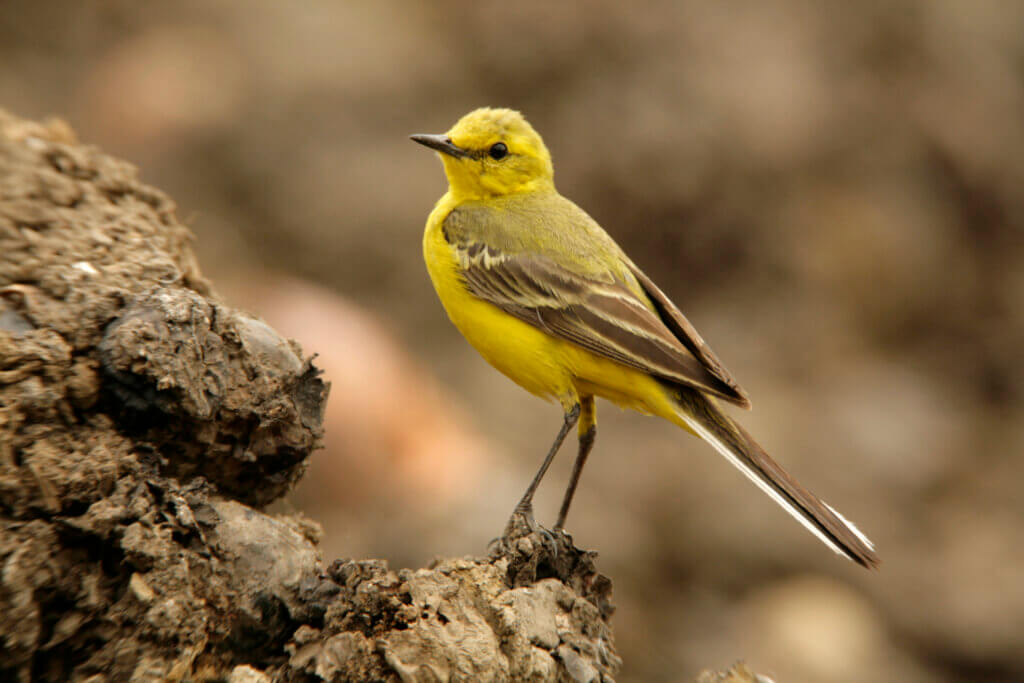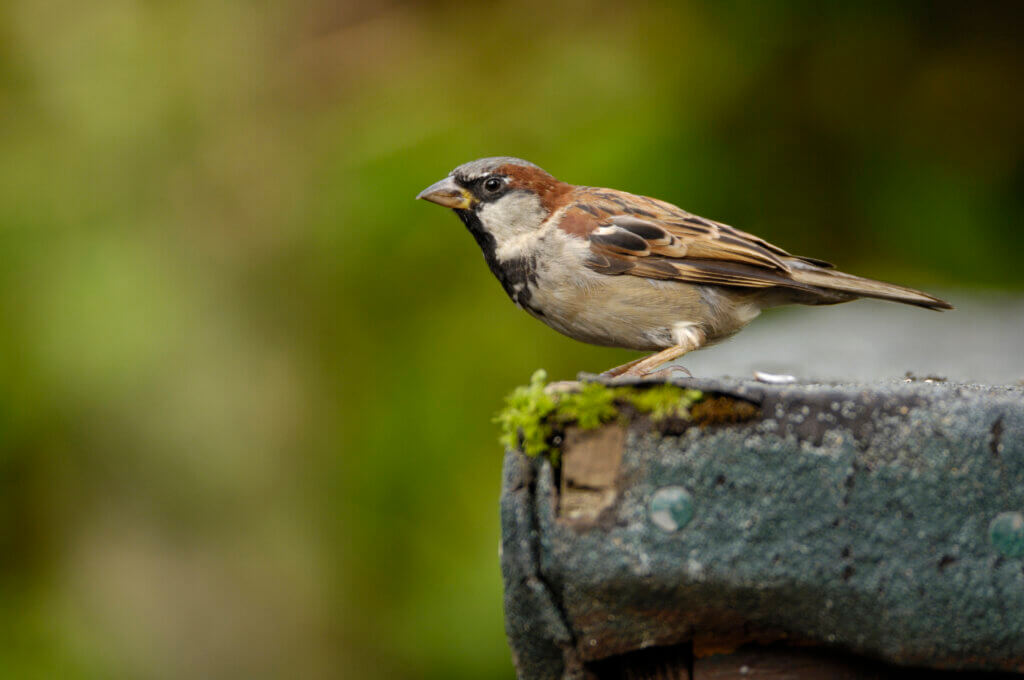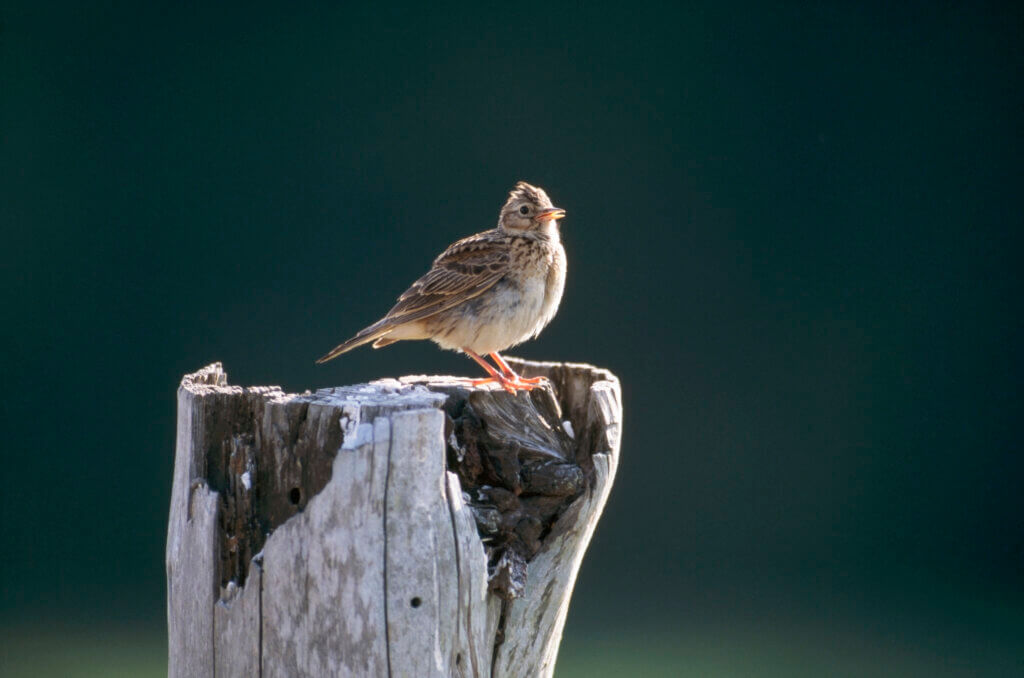New report reveals huge declines in Europe’s birds

- New data suggests around 600 million breeding birds have been lost in the EU and UK since 1980
- A significant proportion of these losses are as a result of massive decreases in the more common and abundant bird species
- The largest drop in population is seen in the house sparrow with 247 million fewer individuals, followed by yellow wagtail with 97, starling with 75, and skylark with 68 million fewer individuals
A new study on breeding birds in the EU and UK shows one out of every six birds over nearly a 40 -year period has been lost. Overall, we have lost around 600 million breeding birds since 1980.
Scientists comprising a team of European collaborators from RSPB, BirdLife International and the Czech Society for Ornithology analysed data for 378 out of 445 bird species native to countries in the EU and UK.
Between 1980 to 2017, the authors estimate an overall population decline between 17% and 19%, equating to a loss of between 560 and 620 million individual birds. In fact, some 900 million birds have been lost during that period, however, this is set against an increase of around 340 million in certain species. Very large declines in a small number of common species account for a large proportion of these losses and the same is true of the increases.
The study was compiled using data from the European Bird Census Council’s Pan European Common Bird Monitoring Scheme, and mandatory reporting by EU Members States to the European Commission under the EU Birds Directive.
The once ubiquitous house sparrow has been the worst hit. It has lost 50% of its population since 1980, a total of 247 million birds. Its close relative, the tree sparrow, has also lost 30 million birds. Both have been affected in changes in agricultural policy and management, however, house sparrows in cities have also declined. The reasons for these urban declines are not clear but may be linked to food shortage, the spread of avian malaria or the effects of air pollution.

When comparing populations by habitat, the highest total losses were seen amongst farmland and grassland birds. It is widely recognised that changes in farming practices driven by policy are responsible for a precipitous decline in wildlife. As a group long-distance migrants such as willow warbler and yellow wagtail have also declined proportionally more than other groups, as have shorebirds such as lapwing and dotterel.
Whilst much of the decline in bird numbers occurred during the 1980s and 1990s, in the last decade the rate has slowed. In the EU, the Birds Directive and the Habitats Directive provide legal protection to priority species and habitats and have been shown to benefit bird species, as well as enhancing habitat protection.
As an example, seven species of birds of prey have increased in recent decades following increased protection and reductions in pesticides and persecution, as well as from the introduction of targeted recovery projects. Without the introduction of these directives, there is little doubt that declines in many species would have been much worse.
However, this work supports previous research showing substantial recent biodiversity loss. The decline of common and abundant birds shows that further broader scale conservation work is still required. There is an urgent need to conserve birds associated with agriculture, as well as long distance migrant birds across their migratory journeys.
Importantly, the loss of common and abundant species is a concern because it implies damage to our ecosystems and their function, and potentially to the delivery of ecosystem services upon which humanity depends. The dominance of common species means that changes in their populations may have large implications for the health our of our ecosystems.
Fiona Burns, RSPB Senior Conservation Scientist and lead author of the study said: “Next year the United Nations Convention of Biological Diversity will be meeting to discuss the future of our global biodiversity, and create a framework which calls for increasing conservation efforts to be targeted towards preventing extinctions and recovering species abundance. Our study is a wake-up call to the very real threat of extinctions and of a Silent Spring, and we are fully supportive of ensuring a strong framework which puts conservation front and centre of any global plans.
We need transformative action across society to tackle the nature and climate crises together. That means increasing the scale and ambition of nature-friendly farming, species protection, sustainable forestry and fisheries, and rapidly expanding the protected area network.”
Anna Staneva, BirdLife Europe Interim Head of Conservation said: “This report loudly and clearly shows that nature is sounding the alarm. While protecting birds that are already rare or endangered has resulted in some successful recoveries, this doesn’t seem to be enough to sustain the populations of abundant species.
Common birds are becoming less and less common, largely because the spaces they depend on are being wiped out by humans. Nature has been eradicated from our farmland, sea and cities. Governments across all of Europe must establish legally binding targets for nature restoration, otherwise, the consequences will be severe, including for our own species.”
Alena Klvanova, PECBMS project manager and the head of CSO International monitoring and research department, pointed out: “This study highlights the importance of long-term citizen-science based programs conducted for decades across whole continet. Gaining such a large invaluable dataset was only possible thanks to the unflagging efforts of national monitoring schemes coordinators and thousands of volunteer fieldworkers, who count birds each breeding season in a standardised way in almost thirty European countries.”
“The outputs could help the public, as well as the responsible politicians, to realise that common birds might not be common forever if we take no conservation actions,” she added.

ENDS
[registration_form]
We are no longer a part of the European Union and, whatever the pros and cons of that may be, it does mean we have the opportunity to do diverge from the strictures of the CAP and redirect our farming to be more wildlife friendly. However, as this report makes clear the decline in birds is a problem affecting the whole of Europe and I very much hope that we can work with our neighbours across the North Sea to address this problem in a meaningful way. Some of the species mentioned are not migratory but many of the species whose UK decline we are concerned about spend a part of their annual cycle migrating through the EU so this is not a problem that we can solve in splendid isolation.
I take your points, but the CAP is about to be hugely overhauled, apparently for the better for wildlife. It would be the deepest of ironies if the new CAP (when it appears) turns out to be better than the new Environmental Land Management scheme in England.
Yes I agree. Personally, I would have preferred us to remain in the EU and to help reform the CAP for the benefit of wildlife across the whole of Europe. Given that we have left we can choose to go further and faster than the EU but of course that does not mean we will and I fear that there is plenty of scope for disappointment at the gap between what we might hope for and what we actually get.
Well said.
I think there is little doubt that intensive farming is very largely to blame for most of our large wildlife losses as highlighted by the RSPB. I have often referred to the work done on the RSPB’s Hope Farm in Cambridgeshire where they run an economical and productive farm and at the same time have had large increase in birds and other wildlife on their farm. Why oh why is this rotten government not encouraging the farming industry to follow many of their examples.
One only has to look at the enormous size and weight of much of farming machinery to see that it is totally out of proportion to caring for the land.
This time of year too we see these terrible large flails which bei are used to smash up our hedge rows so they are rendered totally useless for bids. Before those flails came about our hedgerows were an important habitat for wildlife. Now they are just part of the green desert. The use of flails on hedgerows should be totally and completely banned.
With all these monstrous pieces of farming equipment inflicting so much damage to our land and wildlife it is small wonder we are seeing such large wildlife declines. In addition the expansion of the activities by those those who like to kill our wildlife for fun such as pheasant and grouse shooters, are substantially degrading our uplands and lowlands.
So overall farming practices need to be radically reformed, as well as driven grouse shooting and intensive pheasant rearing and shooting totally banned. We might then stand a chance of bringing back at least a part of our lost wildlife. We are told by the farming industry that such reforms would mean we would pay more for our food but I doubt this is true and a largely unsubstantiated propaganda claim. RSPB’s Hope Farm shows that productive farming and good wildlife counts can and do coexist.
Farms could do an enormous lot for wildlife if they just let their unused nooks, crannies and corners become wildlife habitat – in the same way that we’d have more of it in urban areas if the bits that are close mown grass for no clear purpose became meadows, copses and wetlands. Unfortunately the mentality that still largely prevails in urban areas that stops this happening is also pretty prevalent in the country too, a point that Mark Cocker has been to my knowledge unique in raising in his wonderful book ‘Our Place’. The number of hedgerows that have been flail mowed to suburban acceptability in the countryside is shocking. I know a local raptor worker who puts up owl and kestrel boxes on farms, no problem as it costs the farmers nothing in time, effort and money.
Otherwise according to them the vast majority will do nothing to help wildlife. One has rejected several approaches to help preserve a remnant of ancient woodland on their land, it’s on its last legs. At least one goes everywhere on his farm with a shotgun and kills anything that moves. Another one filled in an ancient, wildlife rich pond in a paddock because he wanted to make it more presentable for potential developers. The few, very few farmers that are conservationists stand out like a sore thumb which is probably why it seems other farmers don’t like them that much, they show them up. The sooner the NFU gets challenged to put up or shut up whenever it lectures us about what great conservationists most farmers are, the better.
I agree with all said by others on this topic. Some farmers are doing their best for our wildlife but they are few and far between. The real disgrace in all of this is the NFU which claims it is interested in conservation but which in practice has no interest what so ever. I am sorry to say they could do so much more in giving a lead to farmers on how to be more wildlife friendly such as to stop smashing up our hedgerows with these terrible flails and being less fanatically tidy by leaving some cornets of land really rough. However as far as I know they just don’t do this.
I recall hearing the NFU chief executive interviewed on the BBC’s Desert Island Discs some little time ago and was appalled at the approach I heard. It was all about squeezing everything out of the land. There was absolutely not a single mention of how to farm in a more wildlife friendly way and to reduce methane and carbon dioxide emissions as well as drastically reducing the use of poisons.
These people ( Mr Eustice in Defra, the management of the NFU and most of their Tory supporters) have to get it it in their thick heads sooner or later that we share this planet with other creatures and wildlife and it is not ours to destroy and to reduce biodiversity to the minimum.
The NFU is despicable – it only exists to aid the greedy in squeezing every single penny it can not just out of the land, but also taxpayer and consumer too, at the very least inconvenience for farmers. Tenant farmers are the ones I believe are most likely to be genuinely struggling financially. My dealings with crofters now mean I take virtually all claims of poverty and hardship from the farming sector with an enormous pinch of salt, and my reaction to them is ‘ok then show us your bank statement, and a list of assets’. There are a lot of people in it receiving govt subsidy, political support and public sympathy that don’t deserve it, while people in other sectors who should be getting it aren’t.
I was watching ‘Winter Walks’ on BBC iPlayer recently including the one with Simon Armitage on England’s north east coast. He passed a small mixed farm and noticed a group of peacock at the front of the barn. He got into discussion with the owner and it transpired he owned FIFTY TWO peafowl. That doesn’t strike me as someone who’s struggling financially. It reminded me of the rather acerbic remark someone made about the farmers on the lower Tay who’ve supposedly suffered grievously from the presence of beavers – ‘they all drive around in shiny new Range Rovers’. A shame more farmers don’t have the level of interest in wildlife conservation that some do in new Range Rovers and exotic birds as free range ornaments.
The NFU was always big “business”, this being the operative word.
From the 1930s through to the 1960s my father tenanted, and latterly bought, a 160 acre mixed arable farm, stocked with working Shire horses, an Ayrshire dairy herd, Aberdeen Angus bullocks, a few pigs and a flock of upto 100 various breeds of sheep.
Poultry included Rhode Island Red/Light Sussex laying hens,
a few geese, 50 Bronze Turkeys, Khaki Camble and Aylesbury ducks and, briefly, a few, impossible and noisy Guinea Fowl (which roosted in a big Willow tree and which were almost impossible to catch)
The NFU were always anathema to this type of farming.